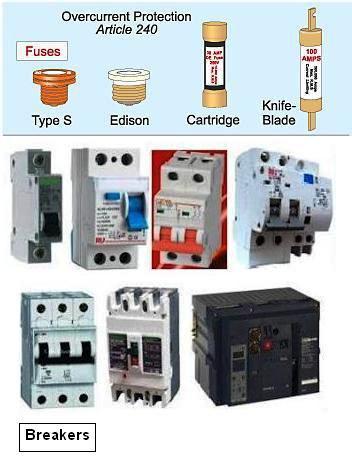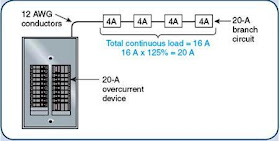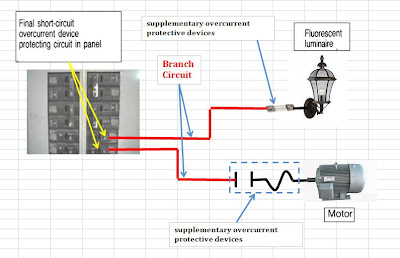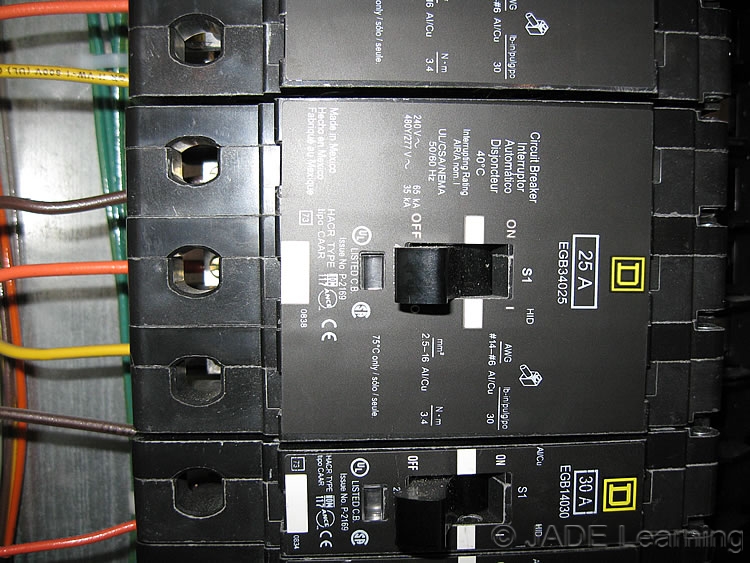Branch Circuit Overcurrent Protective Device
Do you know the importance of branch circuit overcurrent protective device in your electrical system? If not, you might be risking your safety and the safety of your property. Understanding the basics of branch circuit overcurrent protective device can save you time, money, and hassle in the long run. Read on to learn more about this essential component of your electrical system.
The Pain Points of Branch Circuit Overcurrent Protective Device
When it comes to your electrical system, safety should be your top priority. A lack of overcurrent protection can lead to electrical fires, damage to equipment, and even injury or death. Without proper protection, electrical circuits can become overloaded, causing excessive heat buildup that can ignite nearby combustibles and start a fire. Additionally, an overload can damage your electrical devices and appliances or cause them to malfunction.
The Target of Branch Circuit Overcurrent Protective Device
The main function of branch circuit overcurrent protective device is to limit electrical current to a safe level whenever there is an abnormal surge in the electrical flow. This safety mechanism is achieved through the use of fuses or circuit breakers, which are designed to trip whenever the current overload exceeds the rated capacity of the device. Once tripped, the circuit is interrupted, preventing further electrical flow and protecting the equipment and wiring from damage.
Summary of Main Points
Overall, branch circuit overcurrent protective device is a critical component in any electrical system, as it provides protection against overloading and short circuits. It is essential to choose a device that is appropriately rated for the equipment and load it is protecting. Proper installation and maintenance of this device can prevent dangerous situations and minimize downtime due to equipment failure.
Why Branch Circuit Overcurrent Protective Device is Important
Several years ago, I experienced an electrical overload in my home that caused a small fire in one of my outlets. Luckily, my overcurrent protection device kicked in, and the fire was prevented from spreading. This personal experience taught me the importance of having a reliable overcurrent protective device in your electrical system.
When selecting a branch circuit overcurrent protective device, it's important to choose one that is appropriately rated for the load you wish to protect. Choosing a device with too low of a rating could result in tripping and interruption of the circuit, while selecting a device with too high of a rating could lead to damage or injury due to electrical overload. Proper installation and maintenance of the device are also crucial to its effectiveness.
The Benefits of Branch Circuit Overcurrent Protective Device
Aside from its primary function as a safety mechanism, branch circuit overcurrent protective device can also offer other benefits. For example:
- Preventing electrical noise and interference
- Reducing energy consumption and costs
- Preventing damage to equipment and wiring
By limiting the flow of electrical current, overcurrent protection can help maintain a stable and efficient electrical system, leading to reduced energy costs and longer equipment life.
Common Issues with Branch Circuit Overcurrent Protective Device
One common issue that can occur with branch circuit overcurrent protective device is nuisance tripping. This happens when the device trips even when the current load is not above its rated capacity, causing interruptions in the circuit. There are several reasons why this can occur, such as temperature changes, electrical noise, or faulty wiring. Regular maintenance and troubleshooting can help resolve these issues.
How to Troubleshoot Branch Circuit Overcurrent Protective Device Issues
When troubleshooting issues with your overcurrent protective device, one of the first steps is to inspect the device and surrounding wiring for any signs of damage or wear. Additionally, it may be helpful to test the device for proper performance and verify that it is appropriately rated for the load it is protecting.
When to Replace Your Branch Circuit Overcurrent Protective Device
If you suspect that your branch circuit overcurrent protective device is not functioning correctly, it may be time to replace it. Signs that it's time for a replacement include frequent tripping or failure to trip when overloaded, damage to the device or wiring, or the device being outdated or obsolete.
Question and Answer about Branch Circuit Overcurrent Protective Device
Q: How do I know if I have overcurrent protection in my electrical system?
A: A simple way to check if you have overcurrent protection is to look for a circuit breaker or fuse panel in your home or building. These devices are usually located near the service entrance and provide protection for the entire electrical system.
Q: Can I install an overcurrent protective device on my own?
A: It is generally recommended to hire a licensed electrician to install or replace an overcurrent protective device. This ensures that the device is properly rated and installed for the load it is protecting, reducing the risk of future issues or failures.
Q: What happens if I overload a branch circuit overcurrent protective device?
A: If the current overload exceeds the device's rated capacity, the protective device will trip, interrupting the circuit. This prevents further electrical flow and protects the equipment and wiring from damage, fire, or injury.
Q: How often should I have my branch circuit overcurrent protective device inspected?
A: It's recommended to have your overcurrent protective device inspected annually by a licensed electrician. Additionally, any time you notice unusual behavior or signs of damage to the device or wiring, it's essential to have it checked promptly.
Conclusion of Branch Circuit Overcurrent Protective Device
Branch circuit overcurrent protective device is an essential component in any electrical system. It provides protection against overloading and short circuits, preventing damage to equipment and wiring, and reducing the risk of fire and injury. By understanding its function and selecting the appropriate device for your load, you can ensure the safety and reliability of your entire electrical system.
Gallery
Overcurrent Protection – Part One ~ Electrical Knowhow

Photo Credit by: bing.com / overcurrent protection devices protective device electrical part fuses branch circuit must
Electrical Knowhow: Overcurrent Protection – Part Two

Photo Credit by: bing.com / overcurrent solution
645.27 Selective Coordination.

Photo Credit by: bing.com / overcurrent operations
NEC Article 100 - Branch Circuit Definition ~ Electrical Knowhow

Photo Credit by: bing.com / circuit branch device overcurrent nec fig electrical definition
210.18 Rating.

Photo Credit by: bing.com / rating branch overcurrent protective determines circuit device
0 Response to "Branch Circuit Overcurrent Protective Device"
Posting Komentar